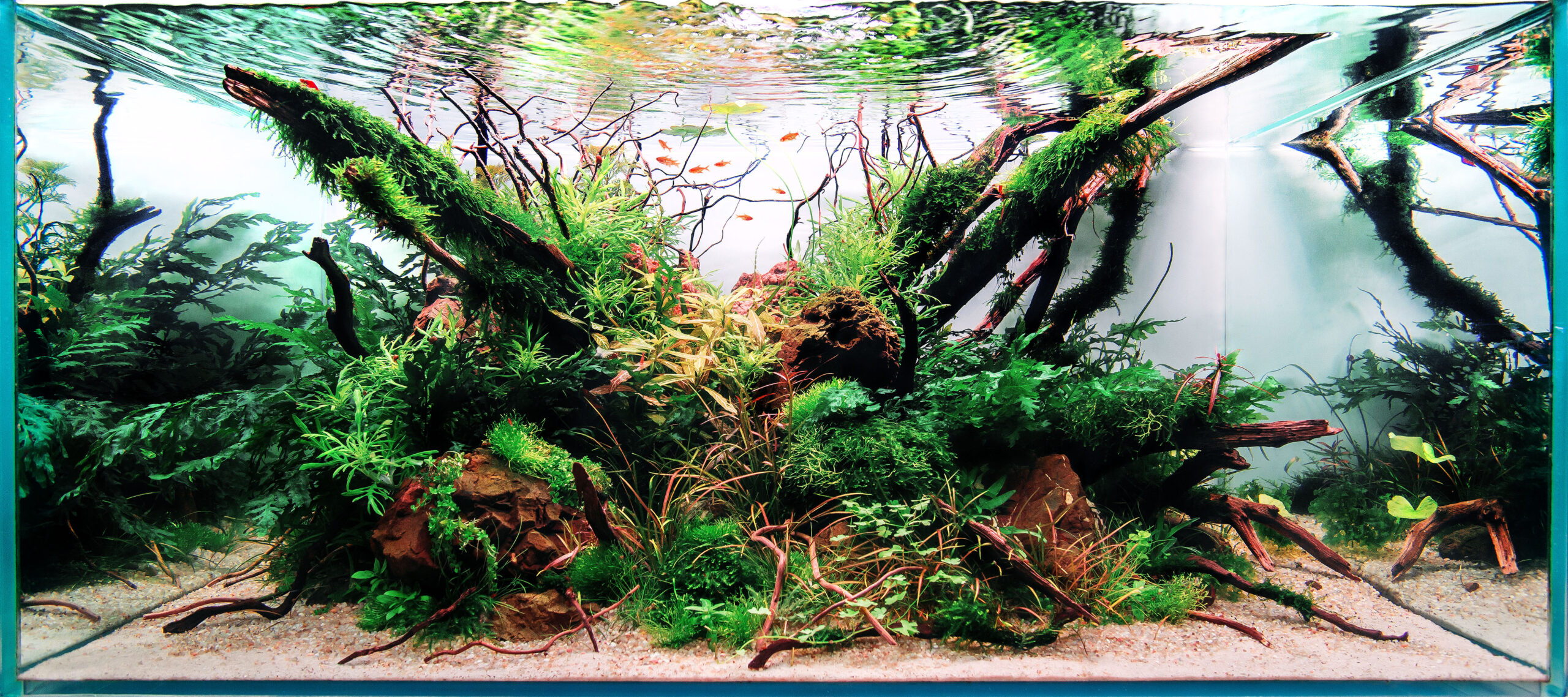

Aquascaping: Designing natural underwater landscapes
Aquascaping is the art of creating underwater landscapes that are close to nature. It is an attempt to transfer the beauty of nature into an aquarium as well as possible. Aquascaping has experienced an enormous boom in recent years and is now a recognized art form.
Aquascapers attach great importance to a natural design of their aquariums. They strive for a harmonious interplay of plants and stones and make sure that the underwater landscape looks as natural as possible. It is important that the inhabitants of the aquarium – fish and shrimp – feel comfortable in their new environment.
For many aquarists, aquascaping is a passion that they pursue with great dedication. In fact, it is not easy to design an aquarium so that it looks natural and harmonious. It takes a lot of experience and patience to create such a masterpiece.
But the effort is worth it: a garden in an aquarium is not only a beautiful hobby, but also an eye-catcher for any room.
Designing near-natural underwater landscapes – the basics
If you want to aquascap yourself, there are some basics you should consider: First, it’s important to think carefully about what kind of landscape you want to create. Do you want to create more of a calm or wild environment? Do you want to integrate mainly plants or also stones in your aquarium? Once you are clear on this, you can start planning.
Another important aspect of aquascaping is the choice of plants. You can find a good selection of low-maintenance aquarium plants here, for example. You also have to consider some things when designing the bottom: The gravel or sand should not be too coarse, so that the roots of the plants can anchor well. It is also important that you regularly check the substrate for algae growth and remove it if necessary – otherwise your landscape can quickly become covered in green spots.
If everything is done right, you’ll end up with a harmonious underwater paradise!
Tips for aquascaping
Here are some tips for your perfect underwater world:
1. Use only natural materials for your aquarium. For example, do not use plastic plants, as they can emit toxic chemicals. Natural plants in the aquarium not only look better, but also filter the water and improve the quality of it.
2. When selecting the fish, make sure that they get along well with each other or whether rivalries can occur. A good mix of different types of fish is crucial for a harmonious coexistence in the aquarium and thus also for the health of the animals.
3. You should pay special attention to the water values. These include pH, ammonia, nitrite and nitrate values. The water temperature and the hardness of the water are also important. Depending on the type of fish, they require different water values. Regular water analyses are therefore advisable to ensure the health of your fish.
4. Another important point is the size of the aquarium. Here, the larger the better. Of course, the purchase of a large aquarium is associated with more costs and maintenance, but the animals simply have more space in a larger tank and can develop better.
5. Last but not least, the aquarium should be cleaned and maintained regularly. This includes changing the water, cutting the plants and cleaning technology and the aquarium glass. How often the aquarium needs to be cleaned depends on the size and characteristics of the aquarium.
Summary
Create natural underwater landscapes – this is the task of aquascaping. By choosing the right plants, stones and other materials, you can create a natural and balanced underwater landscape. The following tips will help you create your own near-natural underwater landscape:
When choosing your plants, look at their qualities as decoration and not just their durability in water.
Choose only the best and highest quality materials for your underwater landscape.
Always use the right amount of plants, stones and other materials for your underwater landscape. Too much or too little will result in an unbalanced appearance.
With a little creativity and planning, you can create a stunning natural underwater landscape!